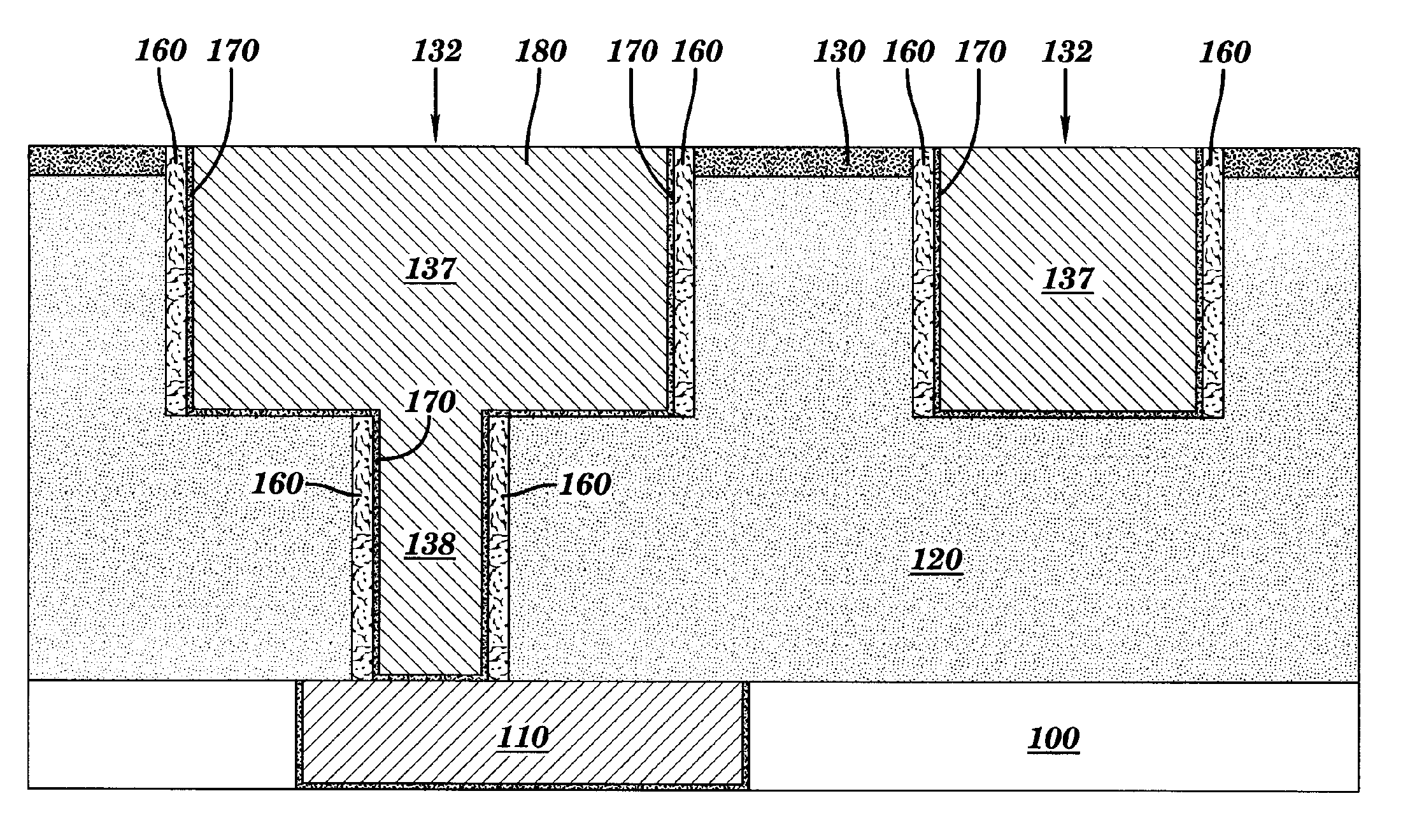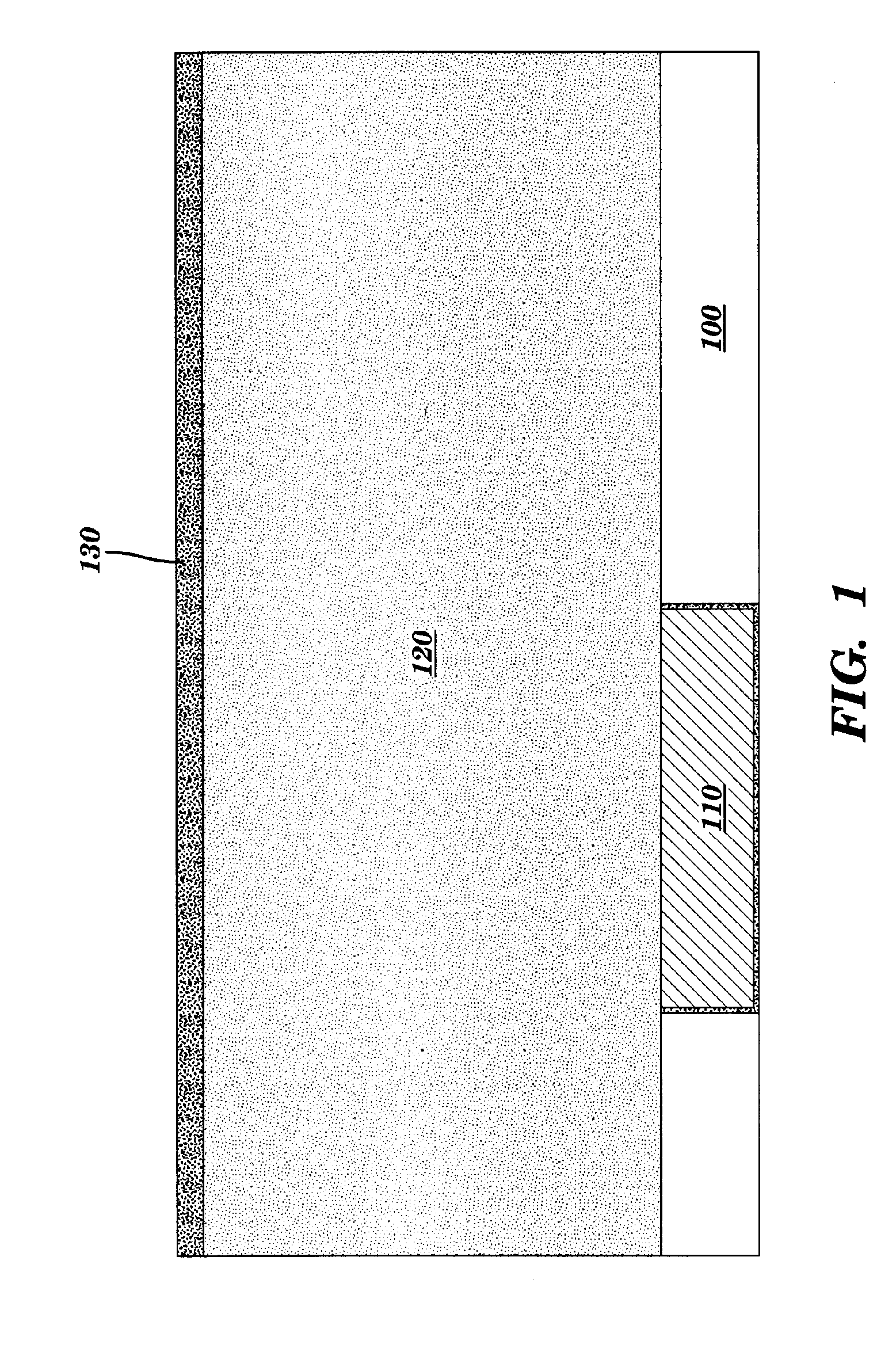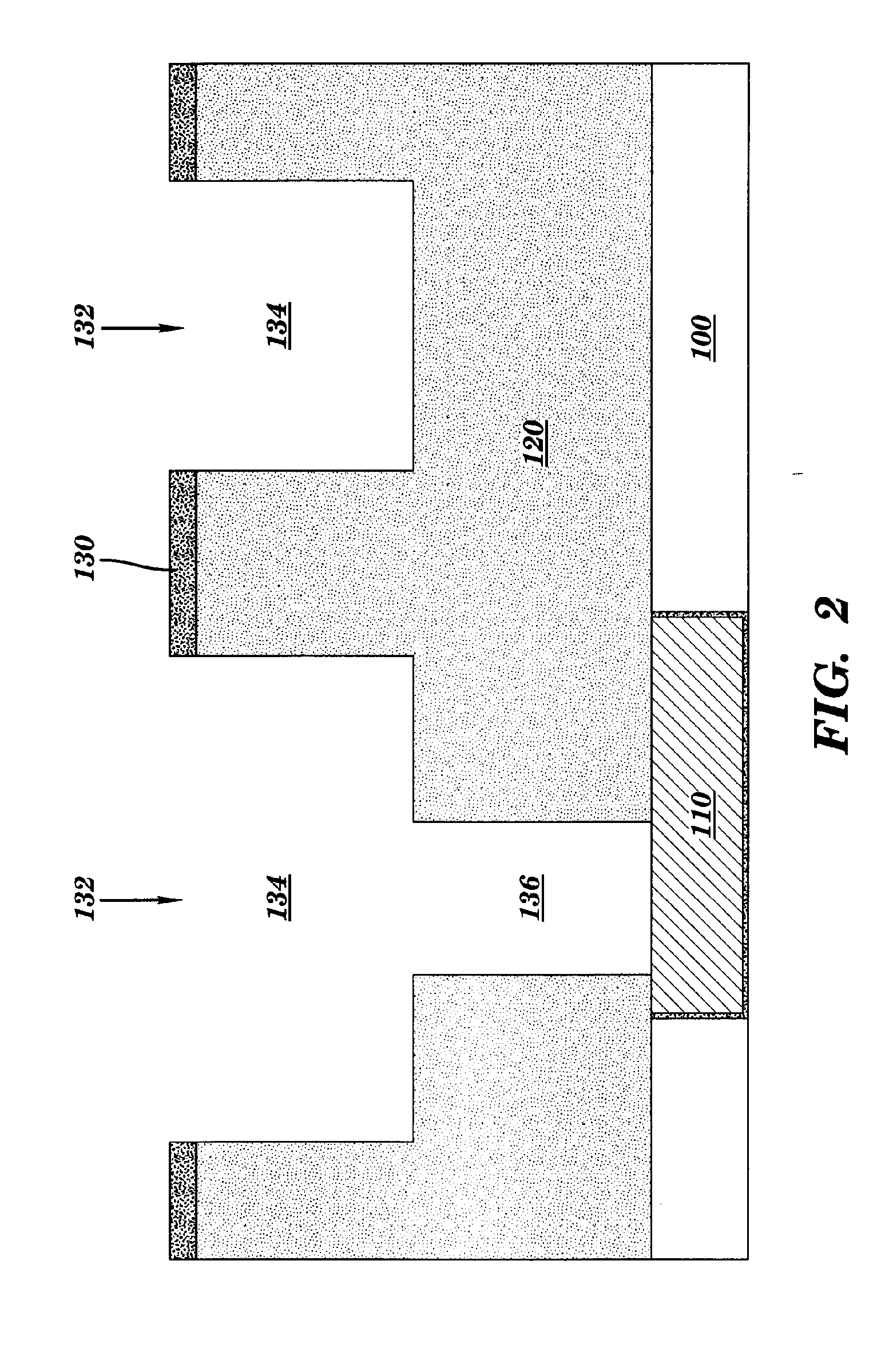Gas dielectric structure forming methods
- Summary
- Abstract
- Description
- Claims
- Application Information
AI Technical Summary
Benefits of technology
Problems solved by technology
Method used
Image
Examples
Embodiment Construction
[0017] Referring to FIGS. 1-9, methods of forming a gas dielectric structure for a semiconductor structure will now be described.
[0018] As shown in FIG. 1, a substrate 100, e.g., bulk silicon or silicon-on-insulator (SOI), with any typical conductor line 110 or active area, etc., patterned therein is provided. A dielectric layer 120 is also deposited thereon. Dielectric layer 120 can include any of numerous dielectric materials including but not limited to: silicon dioxide (SiO2), fluorinated SiO2, Silk™ available from Dow, SiCOH (carbon-doped oxide), Black Diamond™ available from Applied Materials, etc. A hard mask layer 130 can also be deposited on top of dielectric layer 120. Hard mask layer 130 can include any of numerous hard masks including but not limited to: SiO2, silicon nitride (SiN), oxynitride, blok, n-blok, etc.
[0019] As shown in FIG. 2, a first step includes forming an opening 132 for a semiconductor structure in dielectric layer 120 on substrate 100. As illustrated,...
PUM
 Login to View More
Login to View More Abstract
Description
Claims
Application Information
 Login to View More
Login to View More - R&D
- Intellectual Property
- Life Sciences
- Materials
- Tech Scout
- Unparalleled Data Quality
- Higher Quality Content
- 60% Fewer Hallucinations
Browse by: Latest US Patents, China's latest patents, Technical Efficacy Thesaurus, Application Domain, Technology Topic, Popular Technical Reports.
© 2025 PatSnap. All rights reserved.Legal|Privacy policy|Modern Slavery Act Transparency Statement|Sitemap|About US| Contact US: help@patsnap.com



